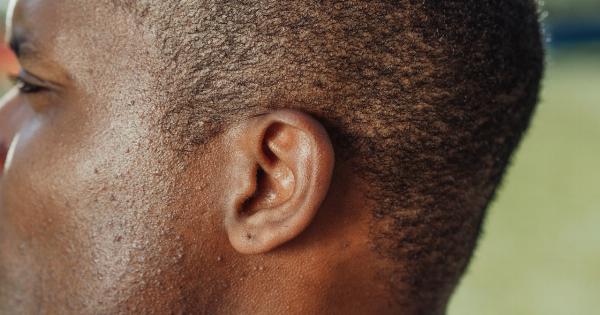Otitis refers to inflammation or infection of the ear, which can affect any part of the ear, including the external ear (outer ear), middle ear, or inner ear.
Otitis is a common condition that can affect people of all ages, but it is more common in children. In this article, we will discuss the causes and treatment options for otitis.
Causes of Otitis
Otitis can be caused by a variety of factors, including:.
1. Bacterial or Viral Infections
Bacterial or viral infections can cause otitis, especially in the middle ear. The bacteria or viruses can infect the ear after a cold or flu, or due to other respiratory infections.
The bacteria or viruses travel to the ear through the Eustachian tube, which connects the middle ear to the back of the throat.
2. Allergies
Allergies can also cause inflammation in the ear, especially in the external ear. The allergens can trigger an immune response, which causes swelling, itching, and redness in the ear canal.
3. Foreign Objects
Foreign objects can accidentally enter the ear and cause irritation. Small objects, such as insects, can crawl into the ear while sleeping, while larger objects, such as cotton swabs or earplugs, can get stuck in the ear canal.
4. Trauma
Trauma to the ear, such as a blow to the head or ear, can cause inflammation or infection in the ear. Trauma can damage the ear canal or rupture the eardrum, which can lead to infections.
Symptoms of Otitis
The symptoms of otitis depend on the type of otitis and the severity of the condition. The common symptoms of otitis include:.
1. Ear Pain
Ear pain is the most common symptom of otitis. The pain can be mild to severe and can affect one or both ears. The pain can be sharp, dull, or throbbing.
2. Hearing Loss
Hearing loss can occur in otitis, especially in the middle ear. The hearing loss can be temporary or permanent and can affect one or both ears. The hearing loss can be mild to severe.
3. Ear Itching
Ear itching can occur in otitis, especially in the external ear. The itching can be mild to severe and can cause discomfort.
4. Ear Drainage
Ear drainage can occur in otitis, especially in the middle ear. The drainage can be pus or blood and can signify an infection.
Treatment Options for Otitis
The treatment options for otitis depend on the type of otitis and the severity of the condition. The common treatment options for otitis include:.
1. Antibiotics
Antibiotics are prescribed for bacterial infections of the middle ear. The antibiotics can help to kill the bacteria and reduce inflammation in the ear. The antibiotics should be taken as prescribed and for the full course of treatment.
2. Pain Relievers
Pain relievers, such as acetaminophen or ibuprofen, can be taken to relieve ear pain. The pain relievers can also help to reduce fever, if present.
3. Ear Drops
Ear drops are prescribed for otitis, especially in the external ear. The ear drops can help to reduce inflammation, itching, and redness in the ear canal.
4. Surgery
Surgery may be necessary for severe or chronic otitis. The surgery can involve removing the infected tissue or repairing the eardrum.
Prevention of Otitis
The following measures can help to prevent otitis:.
1. Keep the Ears Dry
Keeping the ears dry can help to prevent fungal or bacterial infections in the ear. Use a towel or hair dryer on cool setting to dry the external ear after swimming or showering.
2. Avoid Irritants
Avoid using cotton swabs, earplugs, or any other objects to clean the ear. These objects can push earwax further into the ear canal and cause irritation or infection.
Avoid exposing the ears to loud noises or music, which can damage the hearing and increase the risk of otitis.
3. Practice Good Hygiene
Wash hands frequently to prevent the spread of germs. Cover the nose and mouth when coughing or sneezing to prevent the spread of respiratory infections.
Conclusion
Otitis can be a painful and uncomfortable condition, but it is treatable and preventable. Understanding the causes and treatment options for otitis can help to reduce the risk and severity of this condition.






























